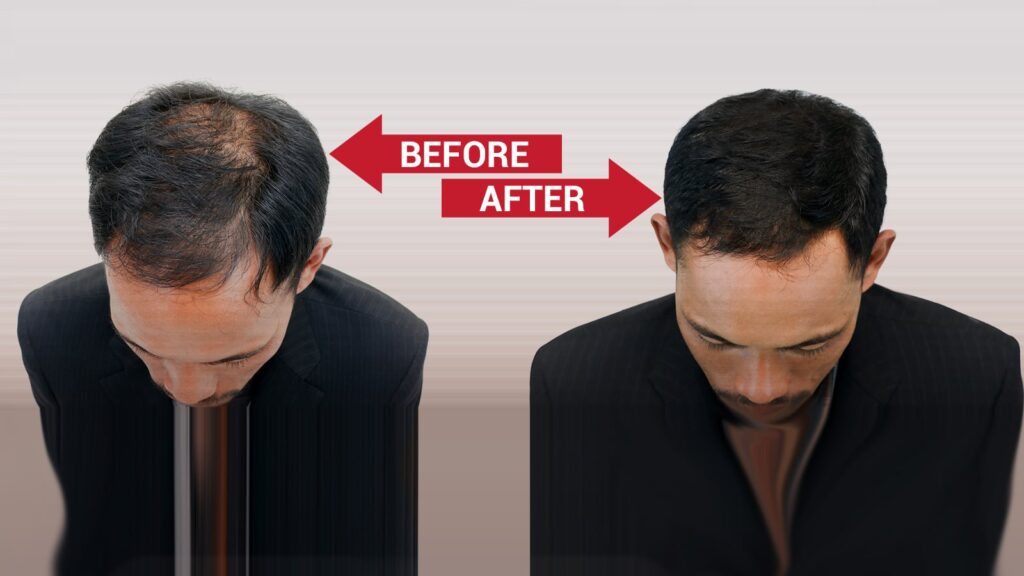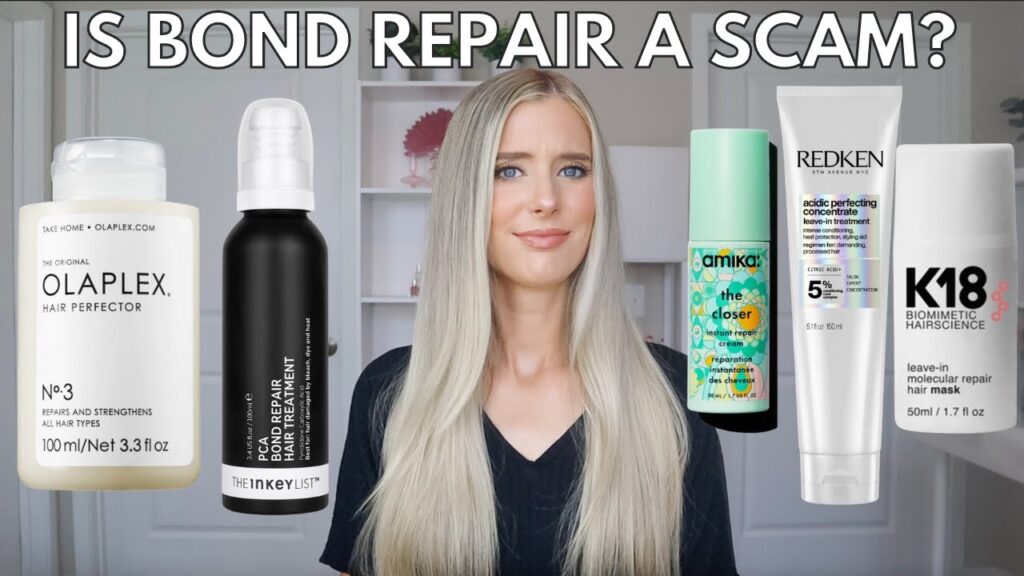Are you tired of dealing with dry, brittle, and lifeless hair? If so, you’re not alone. Hair damage is a common problem that affects many people. Whether it’s due to heat styling, chemical treatments, or environmental factors, damaged hair can be a real confidence killer. Luckily, a hair-bonding treatment might be just what you need to bring your locks back to life.
Understanding Hair Damage

Common Causes of Hair Damage
Hair damage can occur due to various reasons. Some of the most common causes include excessive heat styling, chemical treatments like coloring or perming, environmental factors such as sun exposure and pollution, and even poor diet. Each of these factors can weaken the hair shaft, leading to breakage, split ends, and overall dullness.
Signs and Symptoms of Damaged Hair
Recognizing the signs of damaged hair is crucial for addressing the issue promptly. Some telltale signs include dryness, frizz, tangling, split ends, and a lack of shine. If your hair feels rough to the touch or is prone to breaking, it’s likely damaged and in need of some TLC.
The Science Behind Hair Bonding Treatments

What is a Hair Bonding Treatment?
A hair bonding treatment is a specialized procedure designed to repair and strengthen damaged hair. It works by reconnecting broken bonds within the hair structure, which are often damaged by heat, chemicals, or mechanical stress.
How Hair Bonding Treatments Work
These treatments use advanced formulas that penetrate the hair shaft to repair and rebuild the internal structure. By restoring the bonds, hair bonding treatments can significantly improve the hair’s strength, elasticity, and overall health.
Types of Hair Bonding Treatments
Professional In-Salon Treatments
Professional treatments are typically performed by trained stylists in a salon setting. These treatments often use high-quality products and advanced techniques to deliver the best results. The process usually involves several steps, including cleansing, applying the bonding solution, and using heat to activate the treatment.
At-Home Hair Bonding Kits
For those who prefer a DIY approach, at-home hair bonding kits are a convenient alternative. These kits contain all the necessary products and instructions to perform the treatment at home. While they may not be as potent as professional treatments, they can still offer significant improvements in hair health.
Benefits of Hair Bonding Treatments
Immediate Results
One of the most appealing aspects of hair bonding treatments is the immediate improvement in hair texture and appearance. After just one session, many people notice that their hair feels softer, smoother, and more manageable.
Long-Term Benefits
Beyond instant gratification, hair bonding treatments offer long-term benefits as well. Regular treatments can help maintain the health and integrity of your hair, reducing the risk of future damage and breakage.

How to Choose the Right Hair Bonding Treatment
Factors to Consider
When selecting a hair bonding treatment, it’s important to consider your hair type, the extent of the damage, and your specific needs. Some treatments are formulated for particular hair types, such as curly or color-treated hair, while others are more general.
Reading Product Labels
Pay close attention to the ingredients listed on the product label. Look for treatments that contain high-quality, nourishing ingredients like keratin, amino acids, and natural oils. Avoid products with harsh chemicals that could further damage your hair.
Preparing for a Hair Bonding Treatment
Pre-Treatment Care
Before undergoing a hair bonding treatment, it’s essential to prepare your hair properly. This includes cleansing your hair thoroughly to remove any product buildup and ensuring it’s in a relatively healthy state.
What to Expect During the Treatment
During the treatment, your hair will be carefully sectioned and the bonding solution will be applied evenly. Depending on the type of treatment, heat may be used to activate the bonding agents and ensure deep penetration into the hair shaft.
Step-by-Step Guide to Hair Bonding Treatment
In-Salon Treatment Process
- Consultation: Discuss your hair concerns and desired results with your stylist.
- Cleansing: Your hair will be washed to remove any impurities.
- Application: The bonding solution will be applied to your hair in sections.
- Activation: Heat may be used to activate the treatment.
- Rinse and Style: After the treatment, your hair will be rinsed and styled.
At-Home Treatment Process
- Preparation: Read the instructions carefully and gather all necessary tools.
- Cleansing: Wash your hair with a clarifying shampoo.
- Application: Apply the bonding solution to damp hair, following the instructions.
- Activation: If required, use a hair dryer or flat iron to activate the treatment.
- Rinse and Style: Rinse your hair and style as usual.
Post-Treatment Care
Immediate Aftercare
After your hair bonding treatment, it’s crucial to follow the aftercare instructions provided. This often includes avoiding washing your hair for a certain period and using sulfate-free shampoos and conditioners.
Long-Term Maintenance Tips
To maintain the benefits of the treatment, incorporate regular conditioning and moisturizing into your hair care routine. Avoid excessive heat styling and protect your hair from environmental stressors.
Common Mistakes to Avoid
Misapplication
Incorrectly applying the bonding solution can lead to subpar results. Make sure to follow the instructions precisely and apply the product evenly.
Overuse
Overusing hair bonding treatments can cause product buildup and potentially damage your hair. Stick to the recommended frequency for treatments.

Comparing Hair Bonding Treatments to Other Hair Repair Methods
Hair Bonding vs. Deep Conditioning
While deep conditioning treatments focus on providing moisture and nourishment, hair bonding treatments work on a structural level to repair and strengthen the hair.
Hair Bonding vs. Protein Treatments
Protein treatments are designed to replenish lost proteins in the hair, whereas hair bonding treatments aim to repair the internal bonds. Both can be beneficial, but they serve different purposes.
Potential Side Effects and Precautions
Possible Side Effects
Some people may experience minor scalp irritation or an allergic reaction to the bonding solution. It’s important to perform a patch test before undergoing the treatment.
Precautions to Take
Always follow the recommended guidelines and avoid using products that contain harsh chemicals. If you experience any adverse reactions, discontinue use and consult a professional.
Real-Life Success Stories
Testimonials from Users
“I was skeptical at first, but after my first hair-bonding treatment, my hair felt amazing! It was like getting a new head of hair.” – Sarah M.
“My hair was so damaged from bleaching, but the hair bonding treatment completely transformed it. I can’t recommend it enough!” – Jessica L.
Expert Opinions
“Hair bonding treatments are a game-changer for anyone with severe hair damage. They offer a comprehensive solution that goes beyond surface-level treatments.” – Dr. Emily Parker, Trichologist
Conclusion
If you’re struggling with hair damage, a hair-bonding treatment might be just what you need. These treatments offer a powerful solution to repair and strengthen your hair from the inside out, providing both immediate and long-term benefits. Whether you opt for a professional in-salon treatment or an at-home kit, following the right steps and properly caring for your hair can lead to stunning, healthy results.
